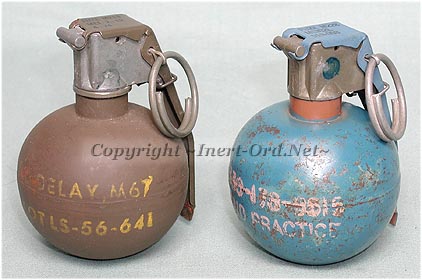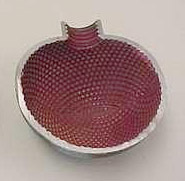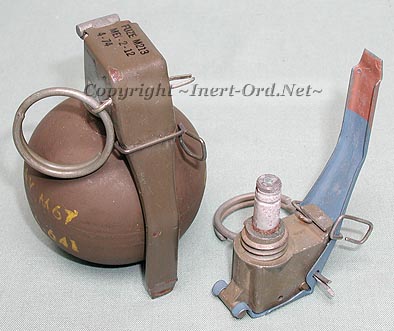
The body consists of two heavy sheet steel halves, welded together at the middle.
The practice version, M69 is of similar construction but with no internal fragmentation matrix. It has a vent hole in the bottom to vent the practice charge. It is painted blue with a red tip on the end of the safety lever.

Visible through the vent hole of the M69, you can see the remains of the detonator tube which contained the practice charge.
There was no requirement for a hole plug as the M228 practice fuze is self contained.

